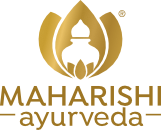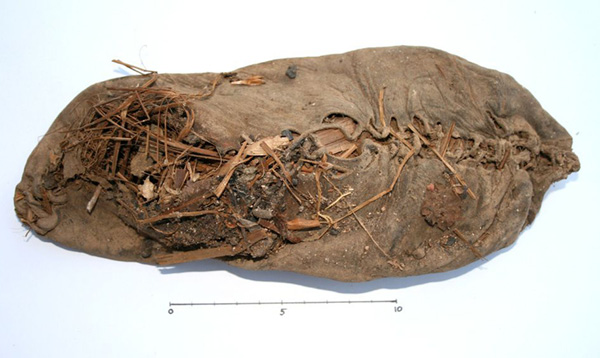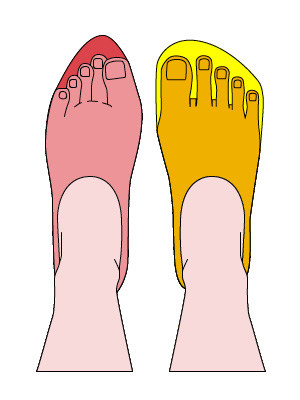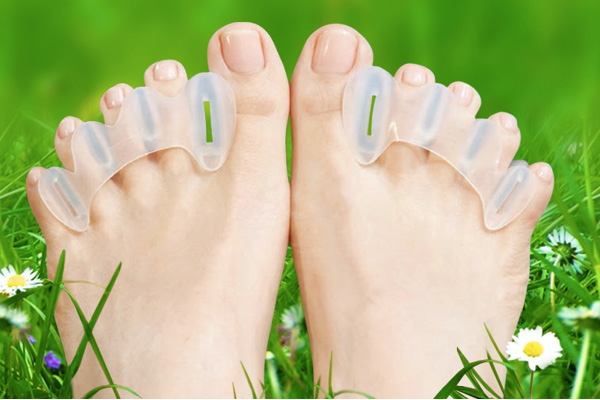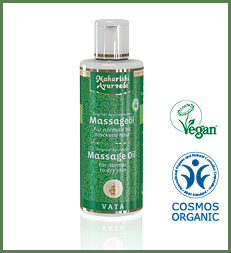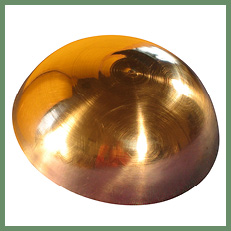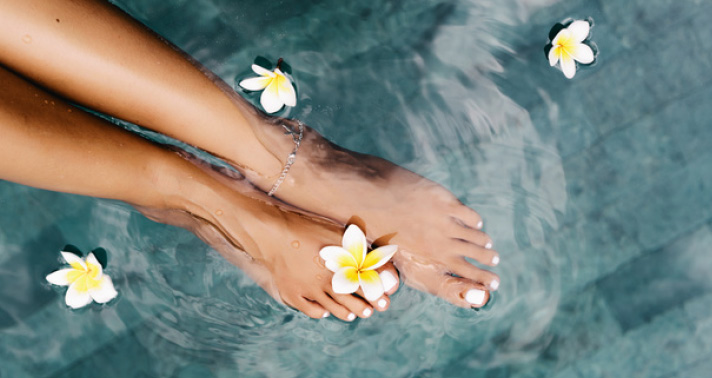
Do you care for your feet?
“Of course” will most probably be your first thought.
But what exactly does “foot care” entail – and what tips can Ayurveda offer for beautiful, cared for feet?
Foot care is much more than what we refer to as “pedicure”, i.e. soaking feet in warm water, cutting toe nails, removing hard skin, a cosmetic foot treatment and a coat of nail polish.
Our feet are the foundation of our body. They carry us through our entire life. Therefore, we would like to pay some special attention to the topic of foot health and the importance of healthy feet for our body. In line with this, we will present our ayurvedic foot massage “Padabhyanga”, which unites body, spirit and soul in harmony, and we now look forward to offering the traditional “Kaash Wellbeing Bowl” for foot massages in our online shop.
The right shoes for healthy feet
Almost 100% of infants are born with healthy feet. However, approximately 80% of adults have foot problems such as enlarged balls of the foot, hammer toes, corns, fallen arches, splay feet, flat feet or heel spurs.
What is the reason for this?
According to experts, unsuitable shoes, which we often start wearing from childhood on, play a great role in the development of these problems. It is indeed not a new discovery that wearing good, healthy footwear is no luxury – the earliest ayurvedic texts recommended wearing the “right” footwear.
What does this mean?
Of course, thousands of years ago there were no “high heels” or “high-tech” shoes around and that’s why we don’t find recommendations in ancient ayurvedic texts on how to fix problems that are triggered by fashionable shoes with high heels and insufficient space for toes.
Let’s have a brief look at the impact high heels and too tight shoes have on our health.
Shoes shape our feet
Pointy shoes immobilise the big toes, which should actually be part of the heel-to-ball movement of the foot. If active use of the toes is no longer possible in the rolling of the foot, the body adapts and only uses the middle and rear foot to carry your body weight.
Free your feet!
Make sure that your shoes provide sufficient space for your toes. For our feet are actually shaped asymmetrically: they are wide at the front and narrow at the back. Most shoes don’t resemble the anatomy of our feet whatsoever.
By the way, this is already the case with very low heels (even for ballerina pumps) – and of course much more severe in shoes with high heels.
Walk barefoot
Try to walk barefoot as often as you can and enjoy the wonderful feeling. Of course, this is not always an option in everyday life. In this case, “barefoot shoes” are a great alternative, provided there are no health reasons that speak against this.
We have tested a few models – and found them good. Nowadays, chic and elegant barefoot shoes are on the market (for example from ZAQQ, Vivobarefoot and Joe Nimble).
Caution: At first wear your barefoot shoes only for short periods of time. Due to cushioning, pronation supports, inlays etc., your foot is probably no longer used to this unusual exposure.
Most people’s feet muscles are impaired, or no longer function properly, due to insufficient movement, wrong shoes etc.
The good news: These muscles – just like all muscles – can be exercised.
Exercise for the feet
Booking a personal coaching or participation in a workshop, for example at a barefoot school is ideal.
Here you learn how to use your natural foot function again, and how foot malpositions affect your body. You learn “right” standing, walking and running. Exercises and instructions based on an individual foot analysis will help strengthen your feet and increase their mobility and sensory functions.
Also, foot exercises with special balls, fascia rollers or straps are highly recommended. A vast and good selection of instructions is also available on YouTube.
At Maharishi Ayurveda Europe we find this topic so exciting that we will hold this year’s annual company outing at a Dutch “Barefoot Park”. Maybe this is a tip for your next excursion with family or friends?
Ayurvedic foot massages
The need to look after the wellbeing of our feet is certainly not new knowledge. Ancient Ayurveda also knows how important the feet and their care are for our health.
One of the most precious ayurvedic massages is “Padabyanga”, a wonderful, therapeutic foot massage. This massage is a vital part of a Panchakarma course of treatments. But you can also enjoy the relaxing effects at home, and do a lot for beautiful, cared for feet.
In one of the oldest fundamental works of Ayurveda, the Chakra Samhita (Sutra Sthana V, 90–92), one can read:
“By massaging oil in the feet, roughness, immobility, dryness, fatigue and numbness are instantaneously cured; tenderness, strength and steadiness of feet are effected; the eye sight becomes clear and vata (vitiated) is relieved thereby.
Prevention from sciatica, cracking of feet, constriction of vessels and ligaments of feet is ensured if (oil) massage is applied to the feet.“
Tip: Before your massage, treat yourself to a 10-minute warm foot bath. Dry feet thoroughly.
New: The Kaash Massage Bowl
We have recently added a Kaash massage bowl, a harmonising well-being bowl for your foot massage.
A foot massage using the Kaash massage bowl is suitable at any time of day. Because of its relaxing effect on body and soul, we highly recommend that you use it before going to bed.
We hope we have been able to contribute a little to your foot health with our suggestions and that you will continue to walk through life with happy feet.
Your Maharishi Ayurveda Team
